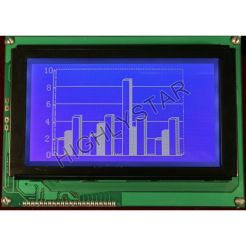understanding different polarizers
Product Description
https://www.highlystarelec.com/productstags/understanding-different-polarizers.html
Understanding Different Polarizers
LCD Polarizer Options: Reflective, Transmissive, and Transflective Types
LCDs (Liquid Crystal Displays) have become an integral part of our daily lives, from smartphones and tablets to televisions and digital signage. One crucial component of an LCD is the polarizer, which determines how light is manipulated to create images or text. There are three main polarizer options available: reflective, transmissive, and transflective types.
Reflective LCDs:
Reflective LCDs employ a reflective polarizer that utilizes external light sources to create the display. These types of LCDs are commonly found in devices such as digital watches, calculators, and outdoor signage. The reflective polarizer reflects ambient light back to the viewer, forming images and text. Their reflective nature makes them ideal for well-lit environments or outdoor use, as they provide good visibility in such conditions. However, reflective LCDs may suffer from reduced visibility in low-light or dark environments since they heavily rely on external light sources.
Transmissive LCDs:
Transmissive LCDs feature a transmissive polarizer that requires a backlight to illuminate the display. These LCDs are widely used in devices such as smartphones, computer monitors, and televisions. The transmissive polarizer allows light from the backlight to pass through the liquid crystals, creating the desired images or text. Transmissive LCDs offer consistent illumination and are suitable for low-light or dark environments where external light sources are insufficient. However, they may be challenging to read under direct sunlight due to the backlight's limitations.
Transflective LCDs:
Transflective LCDs combine the characteristics of reflective and transmissive types, utilizing both a reflective and a transmissive polarizer. These LCDs are known for their versatility and can adapt to different lighting conditions. In well-lit environments, the reflective polarizer leverages external light sources to create images, similar to reflective LCDs. In low-light conditions or when a backlight is used, the transmissive polarizer allows the LCD to function like a transmissive display. Transflective LCDs are commonly used in applications such as portable GPS units, digital cameras, and industrial equipment.
For more information, please visit our website.





